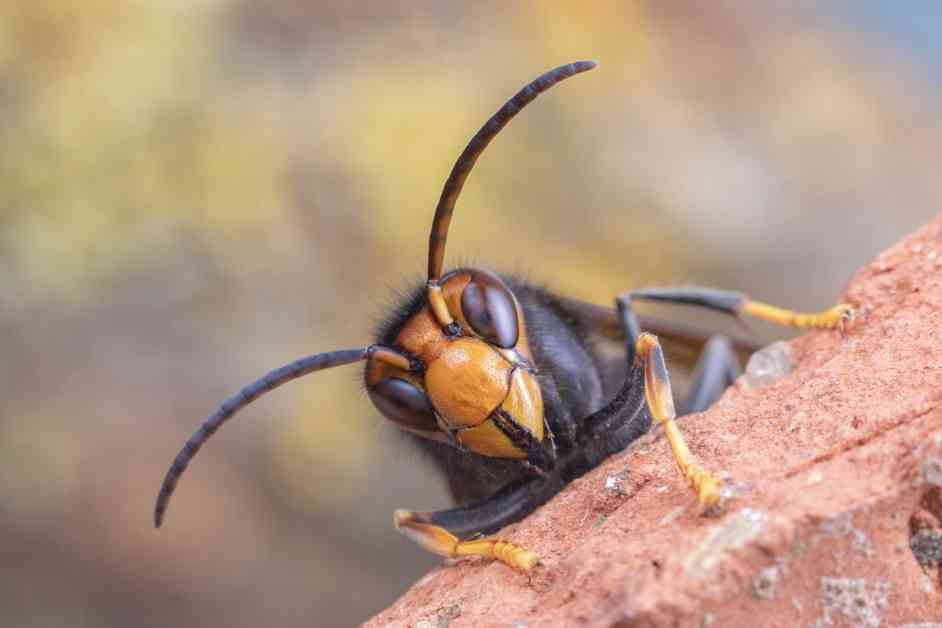Invasive Asian Hornets Threaten Ecosystems with 1,400 Species Found in Guts
The Asian hornet, scientifically known as Vespa velutina, has emerged as a formidable invasive species in western Europe. Referred to as the “Asian predatory wasp,” this hornet has become a significant concern for local ecosystems, particularly honeybee populations. Not to be confused with its cousin, the infamous Asian giant hornet or “murder hornet,” which gained notoriety in the United States in 2019, the Asian hornet poses a distinct threat to biodiversity.
A recent study conducted by a team of researchers has shed light on the ecological impact of these invasive hornets, uncovering a startling discovery. Through the analysis of the diets and guts of over 1,500 Asian hornet samples collected in France, Spain, Jersey, and the UK, scientists identified a staggering 1,449 different species residing within the guts of larval Asian hornets, which rely on adult hornets for sustenance.
Unveiling a Diverse Predatory Menu
Among the myriad species found within the guts of these invasive hornets were bees, wasps, flies, butterflies, moths, beetles, and spiders. Notably, the most prevalent species discovered was the Apis mellifera, commonly known as the western honey bee or European honey bee. Moreover, of the 50 most abundant species identified in the gut samples, 43 were pollinators that visit flowers, underscoring the potential threat posed to vital pollinator populations.
The research team’s findings, published in the journal Science of The Total Environment, have raised concerns about the implications of Asian hornet predation on vulnerable species, particularly essential pollinators. As lead author Siffreya Pedersen stated, “Most insect populations are in decline due to factors such as habitat destruction and chemical pollution. The expanding range of Asian hornets presents an additional threat to these imperiled species.”
Implications for Ecosystem Health
The implications of the Asian hornet’s predatory behavior extend beyond the decimation of bee populations. By preying on essential crop pollinators like the European honey bee and various bumblebee species, these invasive hornets pose a significant threat to agricultural ecosystems. According to The Guardian, a single Asian hornet can consume up to 50 bees per day, exacerbating the already precarious state of bee populations.
While the predation of bees is a pressing concern, the broader ecological ramifications of the Asian hornet’s voracious appetite cannot be overlooked. With flies, beetles, spiders, and other organisms falling prey to these invasive predators, the delicate balance of ecosystems is further jeopardized. As emphasized by Pedersen, “Insects play vital roles in enabling ecosystems to function, including pollination, decomposition, and pest control.”
The Royal Society for the Protection of Birds (RSPB) notes that Asian hornets first arrived in Europe inadvertently through a shipment to France in 2004. While their impact on bee populations has been well-documented, the recent study underscores the diverse diet of these hornets throughout the year, highlighting a broader threat to biodiversity and ecosystem health.
“Our study provides critical additional evidence of the threat posed by Asian hornets as they continue to spread across Europe,” stated Peter Kennedy, co-author of the study and a research fellow at the University of Exeter’s Environment and Sustainability Institute.
Subscribe to receive exclusive updates in our daily newsletter! By signing up, you agree to the Terms of Use and Privacy Policy and to receive electronic communications from EcoWatch Media Group, which may include marketing promotions, advertisements, and sponsored content.
Based in Los Angeles, Paige is a dedicated writer with a passion for sustainability. She holds a Bachelor’s degree in Journalism from Ohio University, with a specialization in sustainable agriculture and a certificate in Women’s, Gender, and Sexuality Studies.














